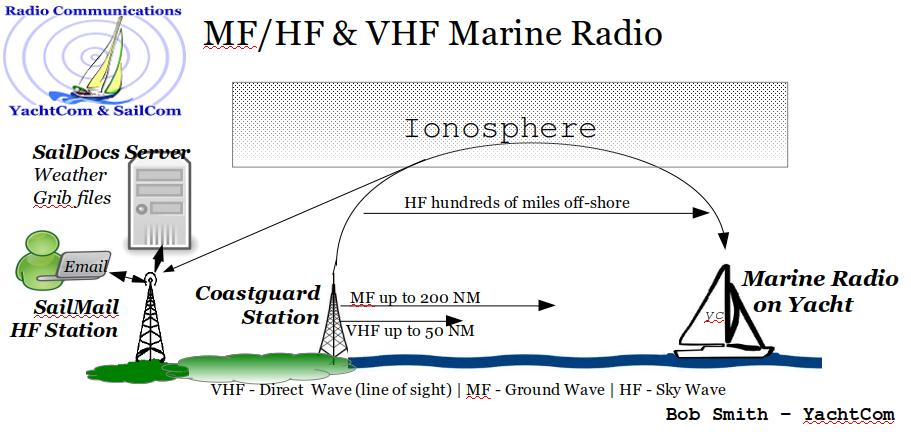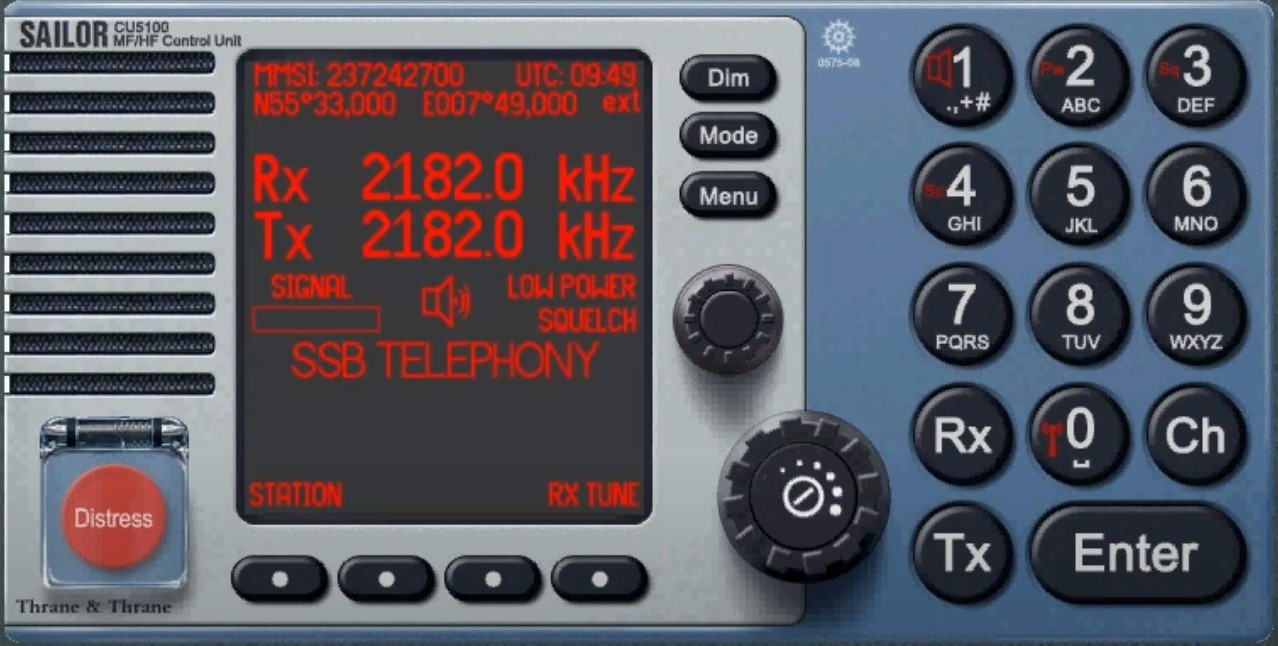DLP-MT-LPCOM7-MF/HF Test call
In this learning path you will learn about Medium/High frequency. Test call will be carried out

The MF/HF has Digital Selective Calling as standard with a built watch-keeping receiver. You can transmit and
receive digital selective calls for quick and efficient establishment of distress, urgency, safety and routine communication with other ships and coast stations.

It is mandatory for all ocean going ships to have a marine MF/HF SSB DSC transceiver on board and the regulation states that the DSC equipment must be tested daily, which is an internal test using the built in self test feature of the equipment and week by means of a live DSC test call to another station.
Medium Frequency (MF) radio
Medium Frequency (MF) radio uses on frequencies between 300 kHz to 3000 kHz and propagates (travels) along the ground, this is called ground wave propagation.
Depending on the transmit power will depend on the range, with a 400 watts transmitter a range up to 200 miles can be achieved. A good rule of thumb is 1 Watt per half mile, so a 100 watt transmitter can be received up to 50 miles during daylight hours.
At night-time MF radio waves refract (bend) at the ionosphere (called sky-waves) and a range of several hundreds miles can be achieved.
High Frequency (HF) radio
High Frequency (HF) radio uses frequencies between 3 MHz to 30 MHz which lies between medium-wave (MF) and VHF radio.
HF radio waves can refract (bend) at the ionosphere giving coverage over hundreds or even thousands of miles and therefore ideal for long distance communications.
MF/HF radio propagation
Low frequencies follow the curvature of the earth and this type of propagation is called Ground Wave, while higher frequency radio waves can also refract off the Ionosphere this type of propagation is called Sky Wave. Sky Wave propagation can suffer from areas where no signal, (called a dead zone) which usually occurs when close to a transmitting station.

Test call to Lingby radio coast station
Daily, Monthly And Weekly Tests Of GMDSS Equipment On Board Ships
The development of GMDSS (Global Maritime Distress And Safety System) for the shipping industry has come a long way. The GMDSS system was established with an objective to improve distress and safety radio communications and procedures at sea.
The greatest benefit of the GMDSS equipment is that it vastly reduces the chances of ships disappearing without a trace, and enables search and rescue (SAR) operations to be launched without delay and directed to the exact site of a maritime disaster.
Gone are the days when ships were required to have dedicated radio officers to operate radio equipment. With the implementation of GMDSS, every deck officer with a General Operator Certificate (GOC) and the license is entitled to use the GMDSS equipment and make radio communications when needed.
For the GMDSS equipment to function properly and effectively in the event of an emergency, it is critical that mariners understand its purpose and do the required maintenance on board the vessel to keep it in a working condition and make the best use of GMDSS equipment.
The daily, weekly and monthly tests of all the GMDSS equipment should be done by every navigating officer responsible for it without any compromise. We must not forget that it is our only best friend in a distress situation at sea.
Ships at sea must be capable of performing the nine functional GMDSS requirements. They are:
- Ship-to-shore distress alerting
- Shore-to-ship distress alerting
- Ship-to-ship distress alerting
- SAR coordination
- On-scene communications
- Transmission and receipt of emergency locating signals
- Transmission and receipt of MSI
- General radio communications
- Bridge-to-bridge communications
Please answer the multiple choice questions in this quiz, if you can't answer some of the questions, go again to activity and try again.
Resource information